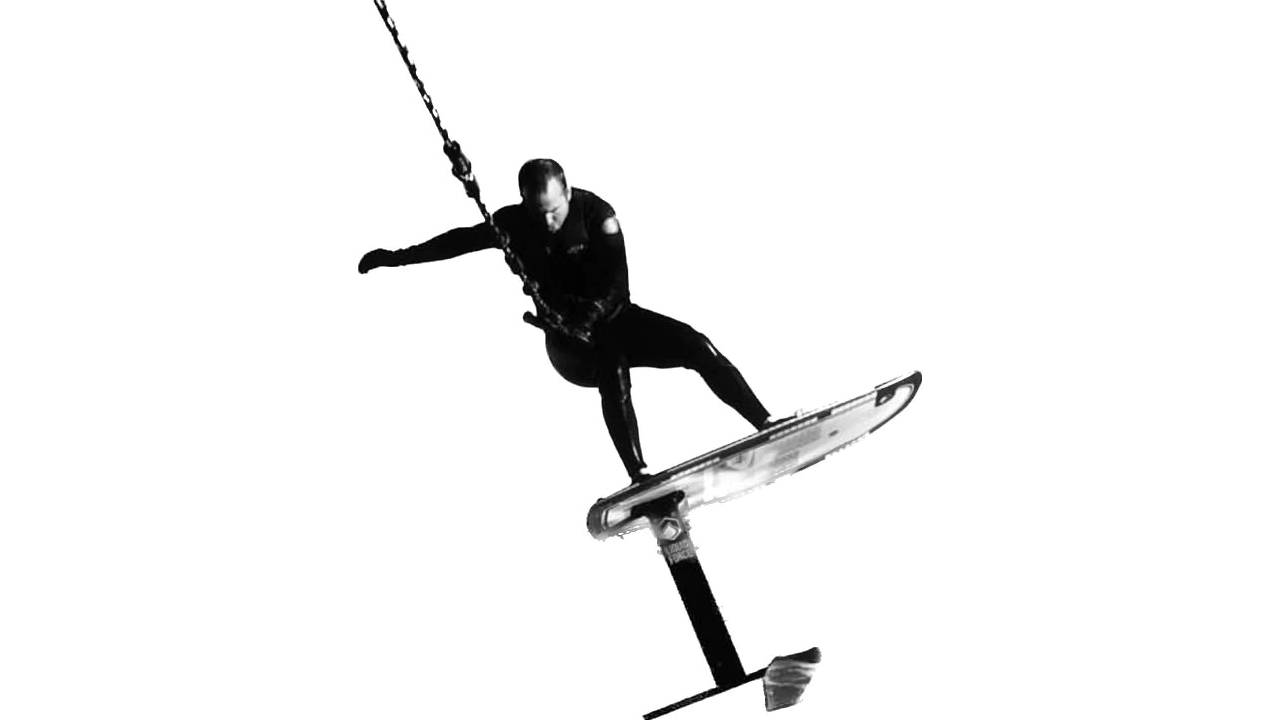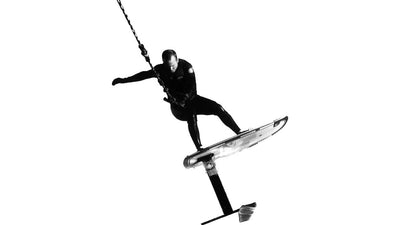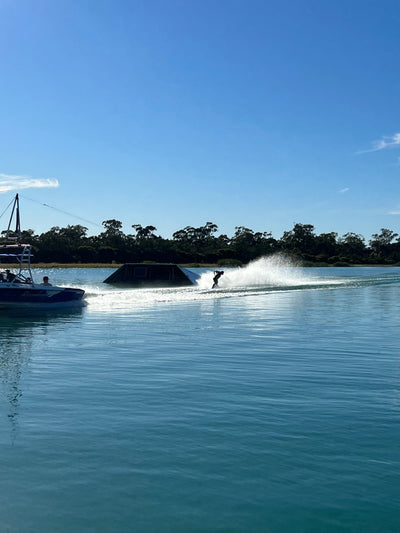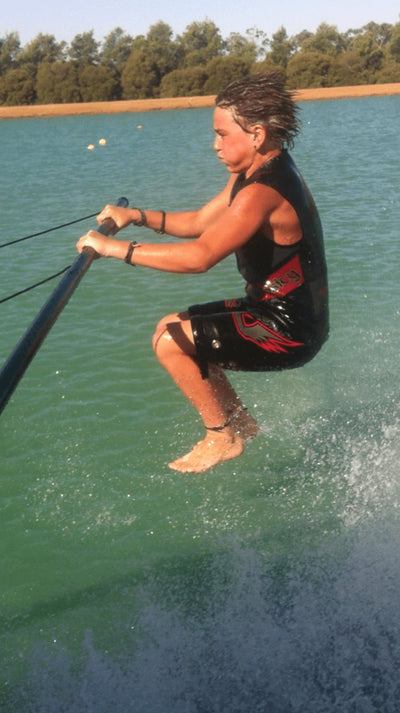Much like the universe, the range of foils is big and rapidly expanding - and much like a child that's just learnt about this universe; it’s enough to explode your mind. But don’t let that get to you. Buying a foil is simple and before you look outwards towards what you want in a foil, let’s look inwards and work out what you need. If your worried you don’t understand certain terms then fear not - like a good little nerd I have made a glossary below.
Who’s it for?
First question - are you buying a foil for you, your mates or the family? If its for you then chances are you’re willing to throw some time and effort into learning and you may not want to go to “beginner” with the foil. Sure, falling off and turning the boat around sucks, but if its just you and your keen then an extra 5-10 falls are irrelevant in the grand scheme of things. For these foilers I would recommend the Pod board with a flite foil by Liquid Force or a slingshot WF-2 board with a PFI 730/710 foil or the Ronix 727 board with the balance wing and the 24-28 inch mast
If you’re buying the foil for a group of people that are all learning then maybe consider going an easier to ride foil. Packages like the Launch board with the Launch Foil or the Ronix 727 board with the balance front wing and the adjustable mast. Three things can help foilers learn. 1 - A steady wing. 2 - A shorter mast. 3 - a board that isn’t buoyant. A steady wing is easy to understand, balance and stability in all endeavors is a great thing. The short mast makes life easier by the board never getting too far from the water and if you do breach, there’s not far to fall back down on to the board and chances are you stay up and keep moving. More balanced wings like mentioned above also handle slower speeds. Lastly a board that floats makes it hard to get in the right position on the starts. More balanced wings like mentioned above also handle slower speeds
The advantage of a beginner foil in a group is that when every one is having a go, the progression of the group improves as a whole and no one is left behind. And as everyone is riding, time on the foil is shared around . Most beginner based foils will last a group a few years and all our foils are up-gradable. So down the track you may get a longer mast or different wing and wont have to buy the whole set up
DIY or Package?
We do our best to package the boards and foils into understandable ideas and set ups that fit types of foilers. But you can go it alone and once you know what you’re looking at, its easy to upgrade your foil set up one piece at a time. Just stick with the same brand and almost always you can swap a wing, or mast or board, or any piece of it really.
What Size Front Wing?
A boat with a big wake may not need a big wing as there is more push, more push means more lift. another good basic rule is that a bigger guy needs a bigger wing. If you have a range of people then pick the best set up you can and change the boat speed as going a little faster can also generate more lift.
If you have a bigger than average ski or wakeboard get a package with a front wing that is bigger, so a balance 1600 wing or a horizon 155. If your a little guy that wants more lift then these wings are for your to. If your pretty average in weight then a 1200-1500 wing will do just fine All the foils we sell come in different sizes and shapes and its hard to recommend a foil to a persons on size, just remember about the ying and yang- bigger wings mean more lift, balance this with your skill and size and you will level out.
What Shape Front Wing?
If you want to leave the wake and traverse to the back, or steal someone else’s wave by traversing off yours and onto theirs as they go past, then you will need a wing that's “high aspect.” The Speed Wing range from Ronix, the G series from Slingshot and the Glider Series from liquid force are your picks here. We would suggest these to foilers that have done a bit of it before though as beginners will find them hard to ride.
If you want to make hard carving turns then a more mid aspect foil is for you, a Horizon foil from Liquid Force, a Balance wing from Ronix or an FCarve or FSurf from Slingshot are your go to’s.
If you don’t know and just want to get up the FSurf from Slingshot, the Flite 120 or the Launch 120 from Liquid Force or the Balance 1300 from Ronix are for you
What Board?
Boards are easy, there is good, better, best. The WF-T and the Launch board are awesome as they are not super buoyant and they will be easy to start on yet not so heavy you cant carve them a bit.
The WF-2, the 727 and the Pod boards are great all rounders, they are light weight and easy to throw around for every turn yet stiff enough to still pump around a little.
The WF-1, the Orb and the Nebula combine the best of light weight foam, carbon responsiveness and strength to get a board that moves when you do, they pump hard, turn sharp and are made so they won’t touch down unless they have to.
Boards generally come in two sizes, so ignore the numbers, they will have a smaller size and a bigger size. Less skilled or bigger people will want a bigger board.
For board selection let your budget be your guide. Don’t get something to crazy if you’re new to foiling as you wont see the benefit of it. You can always upgrade once you start killing it.
Carbon or Not?
Foils are made out of a fiberglass with a little carbon in there or they are all carbon. The glass lay ups are significantly cheaper and do work really well, so why carbon? Carbon gives foils life. There isn’t a better way to explain it, but carbon is lighter, stiffer and just makes the foils sing. It’s also expensive and hurts the hip pocket. A carbon foil will be more responsive as when turning the thing it will hold its shape and the tolerances are so slim that they are almost perfect. You also need to look after a carbon foil better as they are easier to mark and ding. As a basic rule, if you know what you’re doing and want the best - get carbon and you will love it and never go back. But for most people a normal wing lay up is already exceptional.
What Wave?
If you want to ride the first wave on a boat with a surf system - consider a smaller foil. There is a tonne of push there and a big foil will charge the boat more often. It’s also the easiest wave to ride. If you’re looking to be on the first and second wave, a bigger foil will help and the further you go back the less push you will have so try an even bigger foil.
If you don’t have a surf system on your boat, consider the bigger wings, it will help generate lift at slower speed and allow you to stay on the wave even though it may be smaller and not shaped well
So after all that
For beginner foils that want it easy or are in a family/ group of beginners.
- Launch board with a launch foil
- Ronix 727 with a balance 1300 wing and an adjustable foil- go the 1600 if your 100kg plus kg
For beginner foilers that are keen on a challenge but still need to learn.
- WF-T with FSurf
- Pod board with Flite foil
- Ronix 727 with Balance 1300 and 24 inch mast - got the go the 1600 wing if your 100kg plus
For People that can foil and are looking to progress.
- Pod Board with Horizon Foil - 120 set up for max carve, the 155 set up for some pump, carve or for bigger guys, or the 190 set up for bigger guys or just massive amounts of carve glide and getting way out the back
- A Wf-2 with F Surf or FCarve, the FCarve is a bit tighter turning than the FSurf but is also a little less stable and unpredictable.
For people looking for an amazingly good set up that can ride way back on the 2nd and 3rd wave.
- Nebula or the Orb board with the 120 set up for max carve, the 155 set up for some pump, carve or for bigger guys, 190 for bigger guys or just massive amounts of carve glide and getting way out the back
- Ronix 727 with Balance 1600 and 28 inch mast.
- The WF-1 with FSurf or FCarve
For People Looking for the ability to pump as well and ride way out back.
- 727 with a speed wing and the 28 mast
- Nebula or the Orb board with the glider wing
- The WF-1 With the the G Series Phantasm with a 72cm mast - We love the G Series Phantasm foil to bits, it is awesome at pumping and turning - its expensive but if you want the best that's our pick
All the foils above are upgrade-able to longer masts or bigger wings down the track
A Glossary of Foil Terms
Wing/Front Wing - The front wing is the bit that does the the flying, it sits at the front, big generally means more lift or for bigger people.
Rear Wing/Rear Stabilizer - This is helping keep you steady, these are all different shapes and sizes but don’t worry, most are packaged to compliment the front wing.
Fuselage - The bar that joins the wings together.
Lower - The front wing, rear wing and fuselage as a packed item.
Mast - The long skinny bit that joins the lower package to the board.
Mounting Hardware - The nuts and bolts that do the attaching of the mast to the board.
Board - The thing you stand on.
Flying/Foiling - The process of the foil taking the weight and the board coming off the water.
Breaching/ Lane Breachly - When the front wing comes out of the water.
Push - The feeling of the foil wanting to move on its own. The foil is being pushed.
1st Wave - The wave closest to the boat and where most people surf on.
2nd Wave - The wave behind this, and the third wave is behind that and so on and so fourth and fifth.
Hijacking - When you pull off your wave and catch an unsuspecting boats wave. Also know as wave pirating.
Wing Size - Most wings are measured in surface area, 1300 for example stands for 1300cm. But some companies abbreviate this, they might call a 1550 wing a 155. Some company’s also use volume instead of surface area so it is confusing - but bigger is still bigger, the higher the number then generally the more lift and heavier weight it can take
Pumping - Pushing the board and foil up and down, this creates speed and can mean you can get away from the wake and just pump to keep moving.
Carving - Moving back and forth on the wave like a surfer throwing the board around. Carving harder means sharper turns.
High aspect - A description of the shape of the front wing - Picture an airplane and specifically a glider. they have wings that poke out a long way but the wings are skinny front to back. “High aspect” wings are great for pumping, going faster as they have less drag and easily create lift. The down side is they can be harder to steer so turning and carving is normally more difficult and they often need more speed to fly so can be difficult to ride until the boats moving fast enough. A BMX bike is skinny and can turn on a dime, wide buses cannot, the same is true with wings. These wings are becoming more popular as foilers learn and progress and as the technology improves, these wings are to
Low Aspect - A description of the shape of the front wing - Picture the planes in Top Gun, they have low aspect wings. They don’t poke out far but extend the length of the plane. These wings are generally more stable, can fly at lower speeds and can turn sharp. The down side is they have less lift so need to be worked to keep on the wave and they are bad to pump on meaning you wont get away from the wave much
Mid Aspect - A description of the shape of the front wing - A jump 747 has mid aspect wings, They don’t stick out far when compared to the length of the plane and they are in the Goldilocks zone front to back. “Mid Aspect” wings will provide good lift and speed, great carving and some pumping - the down side means that as they are a jack of all trade they are often a master of none. Most wings we sell and use are mid aspect wings - they easily have the biggest diversity in the range







